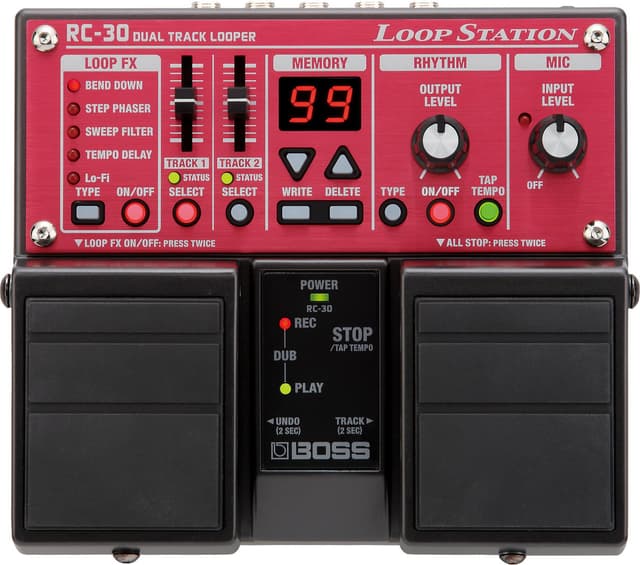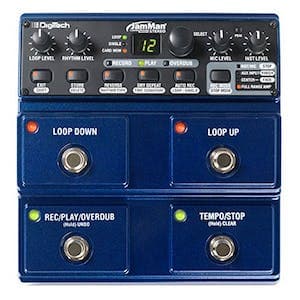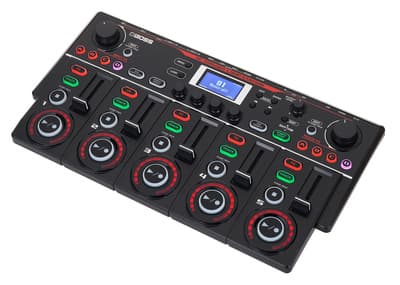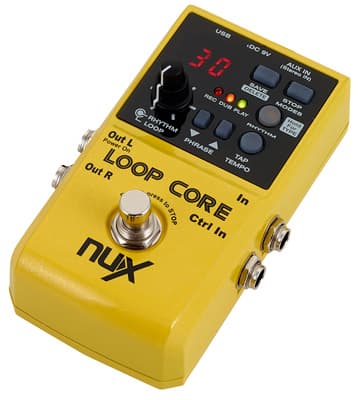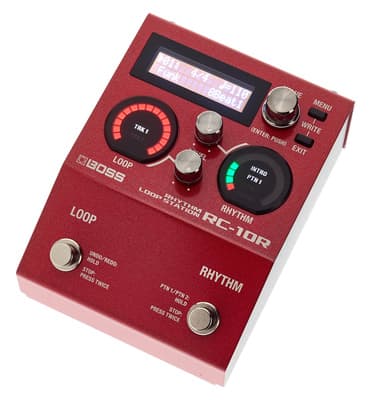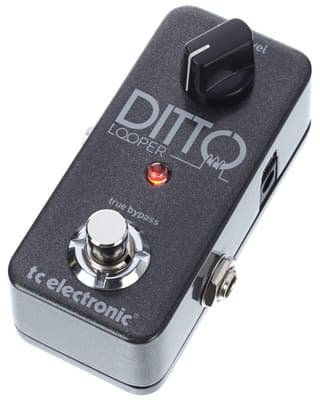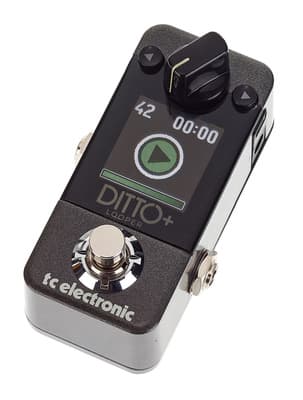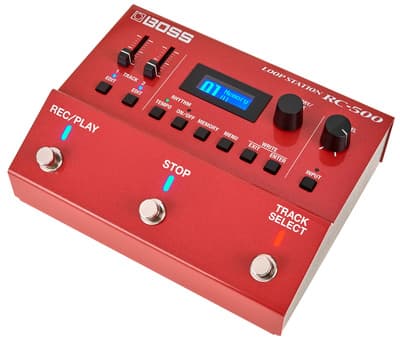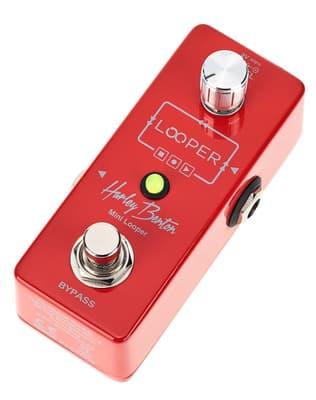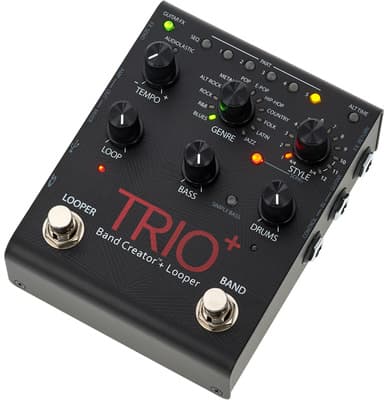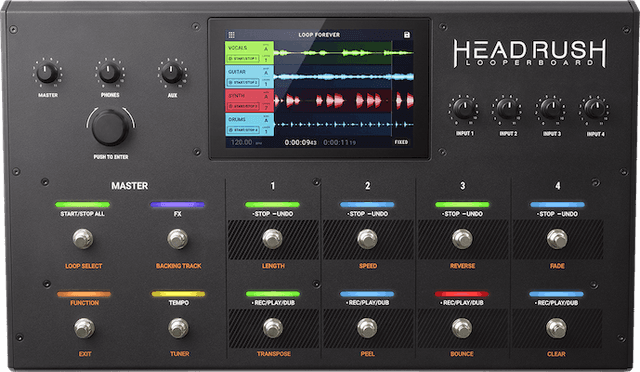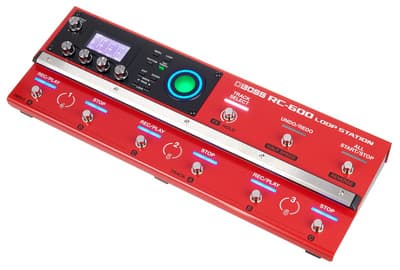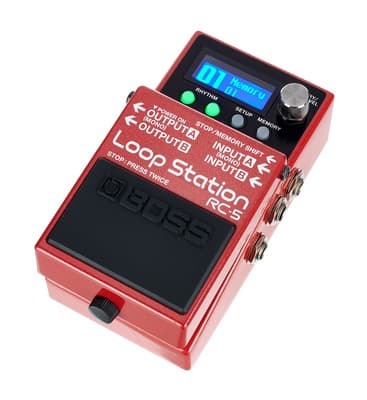Boss RC-3 Loop Station - Test & Review
From our perspective, the Loop Station Boss RC-3 offers a broad spectrum of components and various attractive features promising real value.
We wanted to have a closer look: What is the Boss model, which has been on the market since 2011, capable of? Do the individual components work together? And how easy is the handling of the Loop Station? So we examined it extensively.
Update: The Boss RC-3 is no longer available. If you want to learn more about the successor of the RC-3, take a look at our review of the Boss RC-5. If you want to buy the RC-5, simply click the links above.
Background
With the RC-3, Boss optimizes its Loop Station series. Boss is undoubtedly one of the largest and certainly one of the most successful manufacturers in the industry. The basic loop pedals are continuously gaining more popularity among guitarists and bassists. The beneficial ways in which each individual musician can express themselves on stage receive special recognition. The Boss variations don't need to hide from other purely classical effect pedals (delay, distortion etc.).
Ultimately, it was up to Boss to establish the worldwide boom of both affordable and powerful loopers with the release of the RC-20 in 2001¹. In addition to the RC-30, a twin pedal format, the Boss RC-3 model is an excellent successor to the legendary RC-2. We found that the powerful equipment pushes the bar even higher for the manufacturers.
The looper is compact, incredibly robust and almost unobtrusive. It comes in the small dimensions (W x D x H) of 73 x 129 x 59 millimeters and with a weight of 450 grams. But its small size is deceptive.
In a nutshell - this is what the Loop Station Boss RC-3 has to offer:
stereo loops: integrated stereo in- and outputs
internal recording capacity of three hours
access to ten drum patterns
battery operation possible
99 memory slots for recorded loops
USB 2.0 to connect to your computer
our impression: first-class processing
Technical Details in Practice
Before the Boss RC-3 had been released, the only device of the Boss series able to loop in stereo was the RC-50. But with the Boss RC-3 this has changed. Of course, looping in stereo is much more fun - and you can hear it. Without a doubt, this is the first big advantage of this petite device. Another new feature is the recording capacity of up to three hours. The performance suffices for a lengthy concert, and is almost a quantum leap compared to the Loop Station RC-2. The integrated USB port fits perfectly. Importing and archiving our loops on the PC worked without any disruptions. Various Windows and Mac OS versions instantly recognized the Loop Station as an external USB drive. The device uses the audio format WAV (Wave Format) with linear encoding at a sampling frequency of 44.1 kHz and a 16 bit resolution.
Our video of the test

Various Combinations of Connections Grant a Great Variety
It's possible to store the loops in the battery-powered Loop Station Boss RC-3 with a total of 99 memory slots. When we were testing the device, this process worked smoothly even when we used the maximum storage capacity.


You're free to use multiple connection combinations. There are stereo inputs and outputs in the classic jack format. You can choose between
AB/AB (for complete stereo)
A/AB (for splitting a mono signal into two output channels)
AB/A (for summing a stereo signal in mono)
A/A (for pure mono operation)
B/AB (for a signal appearing exclusively on B)


Possibility of Playalongs and Similar Features
Thanks to this variety, you can choose a combination of your preference. For example, you can initiate playalongs in which you adopt the missing "voice". If desired or needed, guitar and bass might share one looper. Provided that there is an agreement about who presses the pedal at the right time, the result is in splendid synchronization. To switch on the device in the first place, there must be a jack plug in output A.
Use of AUX Input for Special Recordings

If you would like to loop other sound sources, you will have to use the AUX input. It's designed as a stereo mini jack. The AUX input is ideal for looping multiple sources without a mixer (e.g., from a laptop, smartphone or MP3 player). However, it's not possible to remove or mute the incoming signal from the output channels. If you can't live without it, you have to grab a soldering iron and take things in your own hands. But be aware: you'll lose all warranty claims.
Rhythm Guide for a Perfectly Timed Loop
The Rhythm Guide includes ten drum patterns and supports you with a round and perfectly timed looping. The spectrum of rhythms ranges from Pop and Rock to Shuffle, R&B, Funk and Latin. You can change the time signature (3/4 and 4/4) as well as the tempo whenever you like. You also can save the drum patterns, the time signature and the rhythm type with your loop. A separate potentiometer controls the volume of the drums. The tempo has to be "tapped in" with a tap button.
More Features
Besides of the previously mentioned advantages, the Boss RC-3 model offers even more useful features: e.g., the possibility to control the volume for each individual loop.

There are two ways to start recording: As soon as you start playing or switch on a connected playback device, the Loop Station starts recording via the auto record function. For this feature to work, you just need to activate the Boss RC-3 by using the pedal switch once. A second option is the rhythm function. The recording starts after a beat is counted in. If you make a mistake, you can use the undo/redo function. Additionally, a wide range of controls is available:
pedal switch
rhythm on/off button
rhythm (drums) output controls
loop output controls
memory up button (to select between the individual loop banks)
memory down button
write button
tap tempo button
Conclusion
The Loop Station Boss RC-3 represents a significant improvement compared to the previous model RC-2 in terms of power, compactness as well as performance. Due to its maximum number of loops and its recording time of three hours, the Loop Station RC-2 can do little to counter the RC-3. It's also possible to loop in stereo, which previously only the RC-50 of the Boss series was able to do.
Along with this, the capacity of the Loop Station Boss RC-3 is convincing: Thanks to the 1.7 gigabyte memory, you could easily play a complete concert plus several encores.
Update: The Boss RC-3 is no longer available. If you want to learn more about the successor of the RC-3, take a look at our review of the Boss RC-5. If you want to buy the RC-5, simply click the links above.
Sources
More reviews
Publish date:
Last updated:

